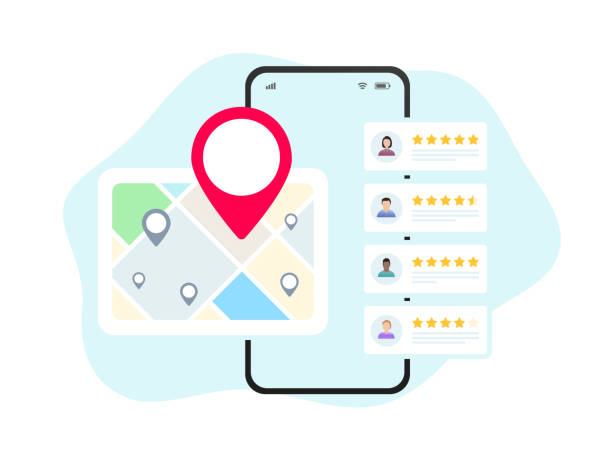Content marketing is a strategy in which you provide valuable, relevant, and consistent content to your audience in a way that captures their attention and engages them. Your content can be in the form of blog posts, videos, infographics, e-books, and social media posts. The main purpose of content marketing is to make your brand relevant and trustworthy to your audience. When you provide your audience with an update or valuable information, you build a strong bond with them. The benefit of the relationship is that the audience becomes interested in your products or services and your brand loyalty increases. Content marketing is not a tool to promote surf products, but rather a strategy to position your brand as a thought leader. When audiences feel they understand your problems and provide valuable solutions.
2. How to talk to your audience first?

The first step in content marketing is to understand your audience. You need to understand who your target audience is, what their needs and interests are, and what kind of content they consume. You can develop a complete profile of your audience to analyze their demographics (such as age, gender, location), psychographics (such as interests, hobbies, values), and behavior (such as online activities, shopping habits). When you know your audience, you can easily create personalized and relevant content for them. This step is important because if you don’t understand your audience, your content won’t make sense to them. The result will be that your engagement rate will decrease and you will not be able to achieve your marketing goals.
3. Content planning and strategy
The secret to content marketing success is to plan your content and develop a solid strategy. The first thing you need to do is define your business goals. These goals may be related to driving sales, increasing brand awareness, or improving audience engagement. After setting goals, you need to think about what kind of content you want to create that will support those goals. Next, you need to create a content calendar, outlining your content topics, format, and publishing schedule. A content calendar helps you keep your content organized and you know when and what you’re going to publish. This planning and strategy helps streamline your content marketing efforts and maximizes the effectiveness of your content.
4. Create Quality material
The lifeblood of a successful content marketing strategy is quality content. When you create content, you have to make sure that your content is informative, engaging, and valuable to readers. Quality content doesn’t just mean that your writing is perfect, it also means that your content is relevant and timely. You need to address, educate, or entertain your audience. In addition, you should also include visual elements in your content, such as images, videos, and infographics, as these elements help to make your content more engaging. When you provide quality content, you win the trust of your audience and engage them with your brand.
5. Maintain consistency
Consistency plays a huge role in content marketing. You need to be consistent in both the frequency and quality of your content. You need to publish your content regularly to keep your audience engaged. If you’re not consistent, your audience may disengage and you won’t achieve your goals. Apart from this, you also need to be consistent in your brand messaging. You need to keep your brand voice and tone consistent so your brand identity is clear and your audience will connect with you easily. With consistency you can maintain the trust of your audience and make your content marketing efforts successful.
6. Use of social media

Social media platforms are a powerful tool for content marketing. You can reach your content to a wider audience and increase your brand visibility through social media. Each social media platform has its own unique user base and content style, so you need to understand which platform best suits your business. On platforms like Facebook, Twitter, Instagram, LinkedIn, and TikTok, you can present your content in a variety of formats, such as posts, stories, reels, and articles. Sharing content on social media allows you to interact directly with your audience, get their feedback, and increase your engagement. Social media marketing will help you boost your content marketing efforts and build your brand.
7. Importance of SEO
Search Engine Optimization (SEO) is an integral part of content marketing. You need to optimize your content to rank high in the search engines. SEO can give your content better visibility in search engines, as well as increased organic traffic to your website. This requires you to use relevant keywords in your content, write meta descriptions, and maintain the overall SEO health of your website. On-page SEO and off-page SEO are very important. On-page SEO focuses on your content structure, internal linking, and content quality, while in off-page SEO you work on link building and social signals. With SEO you can multiply the effectiveness of your content marketing and strengthen your brand’s online presence.
8. Benefits of email marketing

Email marketing is a powerful and direct content marketing tool. You can send valuable content directly to your subscribers via your email list. Email marketing allows you to have personalized and relevant communications with your audience, improving your engagement rates. You can share your new blog posts, offers, or updates through your email campaigns. Apart from this, you can also run drip campaigns, in which you deliver valuable content to your audience step by step. Another benefit of email marketing is that you can track your audience’s behavior, so you can better plan your future content strategy. When you nurture your email list, you build a stronger relationship with your audience, as your brand loyalty grows.
9. Use of Analytics
You need to use analytics tools to measure the success of content marketing. With analytics, you want to understand how effective your content is and how well your audience is engaging with it. With tools like Google Analytics, SEMrush, Ahrefs you can track your website traffic, user behavior, and conversion rates. For this, you can analyze your social media engagement and reach with social media analytics. Analytics can help you improve your content marketing strategy and make your content more relevant and effective. Analytics also let you know how well your content marketing goals are being achieved and what areas you need to focus on in your strategy.
10. User Generated Content
User-generated content (UGC) is a powerful content marketing strategy in which your audience promotes your brand through their content. This can be in the form of content reviews, testimonials, social media posts, or blogs. The benefit of UGC is that it is authentic and from the perspective of your audience, as your brand reputation increases. When you incorporate UGC into your content marketing, you create a deeper connection with your audience, making them feel like, value your opinion and feedback. Additionally, with UGC you can streamline your content creation process and systematically increase your brand awareness. UGC is also integrated in building your brand loyalty.
11. Influencer Marketing
Influencer marketing is a rapidly growing trend in content marketing. Do you strategically promote your brand through industry influencers? Influencers are woo logs that have a large and engaged following, and woo have significant influence over their audience. Your influencers can reach your content to a wider audience and increase your brand’s visibility. Influencer marketing builds credibility and trust for your brand, why audiences trust the recommendations of their favorite influencers. Influencer marketing allows you to amplify your content marketing efforts and connect your brand with new audiences.
12. Ahmadiyyat of Video Content
In today’s digital age, video content has become a very effective and attractive content marketing tool. With videos you can communicate your brand story visually, which is more appealing and memorable to your audience. The benefit of videos is that they make your content more engaging and convey your message effectively. You can share your videos with tutorials, product demos, customer testimonials, or behind-the-scenes content. In addition, live streaming allows you to interact with your audience in real-time, as your engagement progresses. Video content can humanize your brand and create a stronger connection with your audience.
13. Content Distribution Strategy
Winning content creation is important in content marketing, as is its distribution. You have to distribute your content on relevant platforms and ask your target audience. You can distribute your content through social media platforms, email newsletters, guest blogging, and content syndication. Apart from this, you can also use paid advertising for your content, such as Google Ads or social media ads, to get your content seen by more people. Through a content distribution strategy you can increase the reach and visibility of your content, as your brand awareness and engagement increase. Along with distribution, you need to optimize your content so that it performs effectively on different platforms.
14. Evergreen material banana
Evergreen content is content that remains relevant and valuable over time. You have to create evergreen content in your content marketing strategy that will benefit your business in the long term. Evergreen content can bring equal traffic to your website and improve your SEO ranking. Kya Tara content can include guides, tutorials, FAQs, and how-to articles that are always relevant and useful to the audience. You can update evergreen content from time to time to keep it fresh and relevant. Through content, you can build long-term relationships with your audience and build your brand’s reputation.
15. The result of a successful content marketing strategy
With a well-planned and executed content marketing strategy, you can build a strong connection with your audience, increase your brand exposure, and achieve your business goals. Content marketing can help you position your brand as a thought leader, as your brand loyalty grows and your business grows. You’ll need to regularly review and refine your content marketing strategy to stay relevant with the changing needs of your audience. The result of a successful content marketing strategy is that you become a trusted and valuable resource for your audience, investing in your products and services. What strategy can you use to ensure the long-term success of your brand and gain a leading position in your industry?




